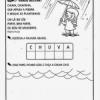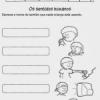
Transition in the federal government and changes in the structure of secondary education are two issues closely linked to Education consequently, to the National High School Examination (Enem), which is considered the main assessment in the country. These points, and others, raised several questions about the extinction of the test. But, can the Enem end?
In answer to this question, currently, there are no predictions regarding the end of the Enem. However, what should happen in the next few years is a reformulation of the greatest test of knowledge in the country.
see more
Extra income! Learn how to earn up to R$ 768 from Enem on weekends
Applications are open for anyone who wants to work on the application of…
These changes are already happening, and became evident from 2017. However, the forecast is that the new high school will accelerate the process. Over the last year, some discussions have already been made. However, official changes to the current structure have yet to be announced.
The National High School Exam was created by the Ministry of Education (MEC) in 1998. That is, in 2018, the test traditionally applied in the second semester, completed 20 years.
In summary, the main objective of the Exam is to evaluate high school students from public and private schools. However, the data obtained through the application of the test, in addition to being used to measure individual performance, contribute to the elaboration of the government's public policies.
With the passage of time and consolidation of the test, from 2009 onwards, many public and private universities adopted the Enem assessment as a selection method. Some even use this as the only evaluation system.
Programs such as the Unified Selection System (SISU), University for All Program (ProUni) and the Student Financing Fund (Fies) provided more opportunities to enroll in higher-level courses higher.
According to the Higher Education Census, released by MEC in 2016, in that year, 8,052,254 students were enrolled in 4,366 undergraduate courses, offered in 2,407 higher education institutions (HEIs) in the Brazil.
Currently, the compulsory high school curriculum is made up of 13 subjects, the reform, however, proposes a drastic reduction.
According to the proposal, in the first half of the teaching stage, only Mathematics, Languages, Human Sciences, Natural Sciences and Professional Technical Training will be taught.
As of the second half, students will be able to choose which subjects they will study to obtain their high school graduation diploma.
But, what about the Enem evaluation system if each student can choose to deepen in an area? One of the possibilities is to carry out a common first stage, whose questions would be elaborated from the mandatory curriculum.
The second stage, in turn, would consist of a specific test, according to the area of the profession that the student intends to follow. For example, a student who wants to study Social Sciences would take a test in history, geography, philosophy, sociology and other related subjects.
However, these are just assumptions, as the government, so far, has not made any changes to the Enem structure official.
After the first day of the National High School Examination in 2018, the president elected, Jair Bolsonaro, announced that he will become aware of the content of the test before the application.
Currently, the methodology for preparing the test is not the same as for traditional entrance exams. The questions are not all written by the same team. They are taken from a bank prepared by several teachers.
A group of professionals from the National Institute of Educational Studies and Research Anísio Teixeira (Inep), autarchy responsible for applying the Exam, is responsible for selecting the questions and preparing three different versions of the assessment.
The first of them is the test applied to all students, the second, to prisoners and the third is reserved in case something unforeseen happens.
Today, for security reasons, only Inep and a restricted group of the contracted Printing Company have access to the test in restricted environments within Inep and the printing company.


